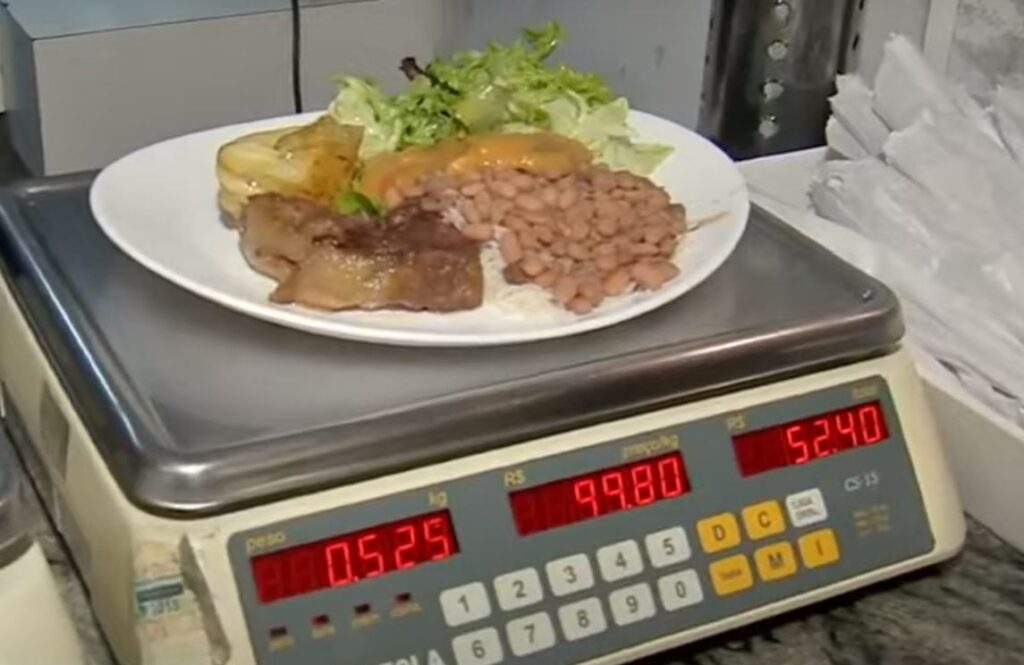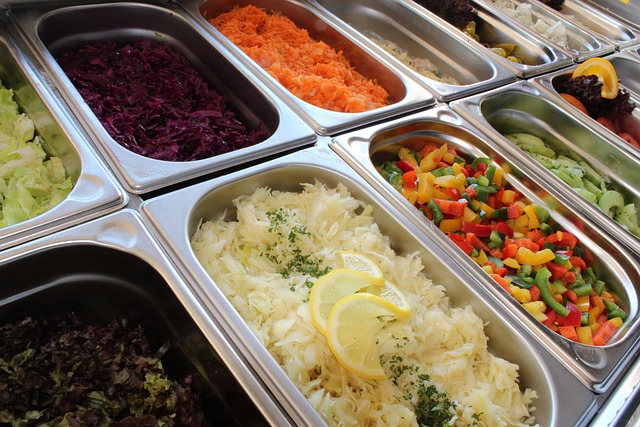Very widespread in Brazil, thousands of people and workers choose to eat their meals, especially lunch, in restaurants per kilo. For customers, the main advantages of per-kilo restaurants are speed and freedom of choice. For example, if you are in a group with people from work, and each one has a different taste, in per kilo restaurants, each person can choose what interests them most.
How it works
The idea is simple: ready-made foods are displayed on a counter (which can be refrigerated or heated depending on the food), and the customer serves them himself, self-service style. Before finding a table to sit at, the customer places their plate full of food on the scale and the amount to be paid is proportional to the weight (don’t worry, the weight of the plate itself is always deducted). Generally, the price is fixed per kilogram or for every 100 grams. And drinks are paid separately. This type of restaurants tend to attract the attention and arouse the curiosity of foreigners.


The freedom to choose
One of the most attractive aspects of kilo restaurants is the freedom they provide in creating your dish. Unlike traditional à la carte menus, where portion sizes and combinations are pre-determined, buffet-style meals allow diners to choose exactly what and how much they want to eat. This flexibility is especially appealing to those with specific dietary preferences or restrictions, as they can create a meal that suits their tastes and nutritional needs.
Variety in abundance
Walk into an a kilo restaurant and you will be greeted by a variety of dishes from different cuisines. From salads and appetizers to main dishes, desserts and seasonal fruits. Take the opportunity to experience the flavors of local food that are part of everyday life, such as beautiful rice with beans, farofa and fresh salad. Basic food such as rice, beans, potatoes, salad and meat is made every day. However, most restaurants vary their menu depending on the day of the week. For example, one day could be dedicated to pasta, others could be Asian food, Arabic food, fish and seafood. The menu depends on each restaurant. The price that each restaurant charges per kilo can also impact the menu offered. Those who charge cheaper generally offer more trivial food. Where the price charged is more expensive, it is possible to find more sophisticated dishes. Currently in São Paulo, prices can vary on average from R$69.90 to R$120.00 per kilo. A meal weighing around 500 grams can cost around R$35.00 to R$60.00.
Accessibility and value
One of the main advantages of choosing a restaurant by the kilo is cost-benefit. Customers pay by the weight of their chosen items, allowing them to manage their budget while enjoying a good meal. This pricing model is particularly attractive for those who appreciate a good deal and want to sample a variety of dishes without spending a lot.
Tips to maximize your experience
- Look at the variety first: take a walk around the buffet to see all the options available.
- Start small: Start with modest portions of your chosen dishes. You can always come back for more if you discover a new favorite.
- Save Room for Dessert: With a tempting dessert section always waiting, be sure to leave a little room for a sweet ending to your meal.
Where to find
As it is a quick meal option, per kilo restaurants are common where there is a concentration of commerce and offices. Therefore, many of these restaurants only open during lunch. Shopping centers also usually have restaurants per kilo, in this case, in addition to lunch you can also go for dinner.
- Jabuticaba Gastronomia (just lunch time), get directions in google maps
- Roda Grill (just lunch time), get directions in google maps
- Manai Gastronomia (For opening hours see the offical website), have 5 addresses get directions in google maps
Enjoy!

